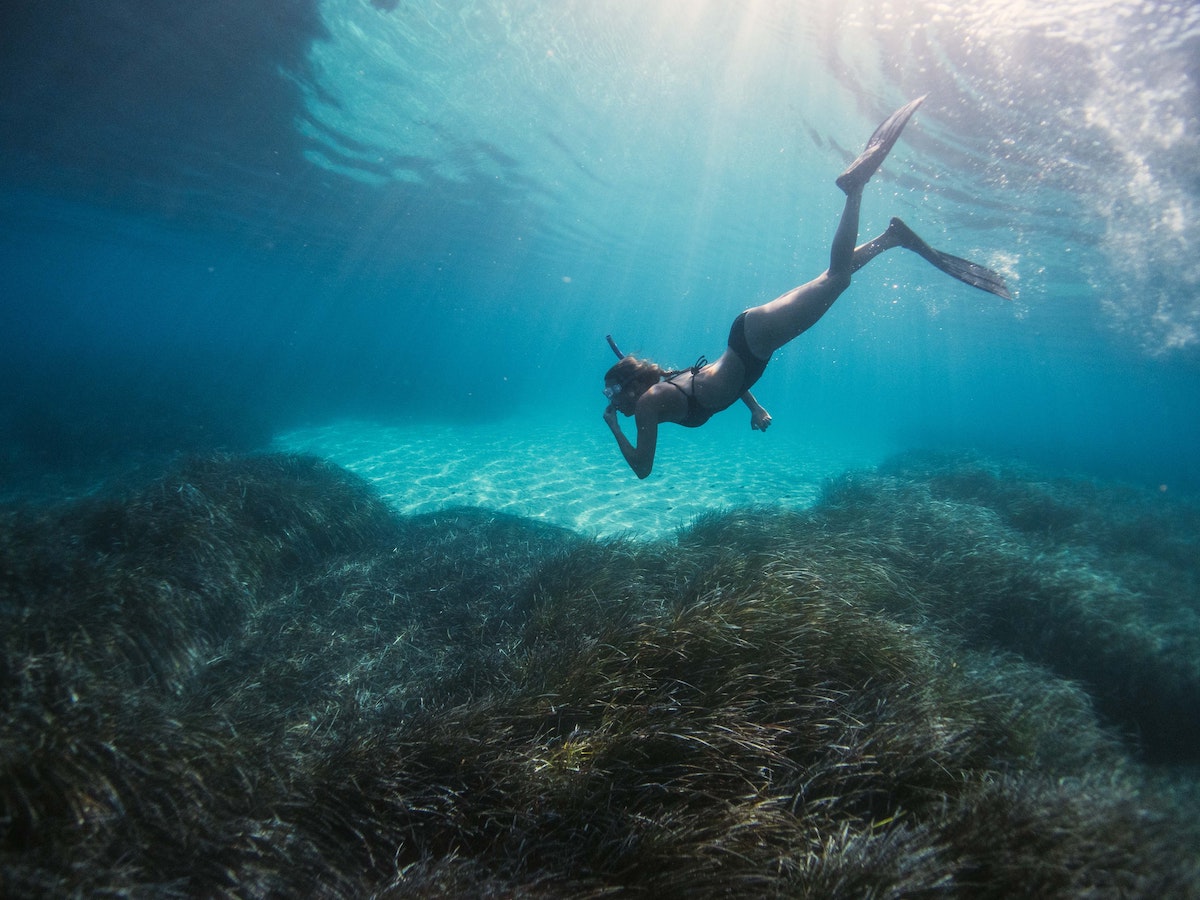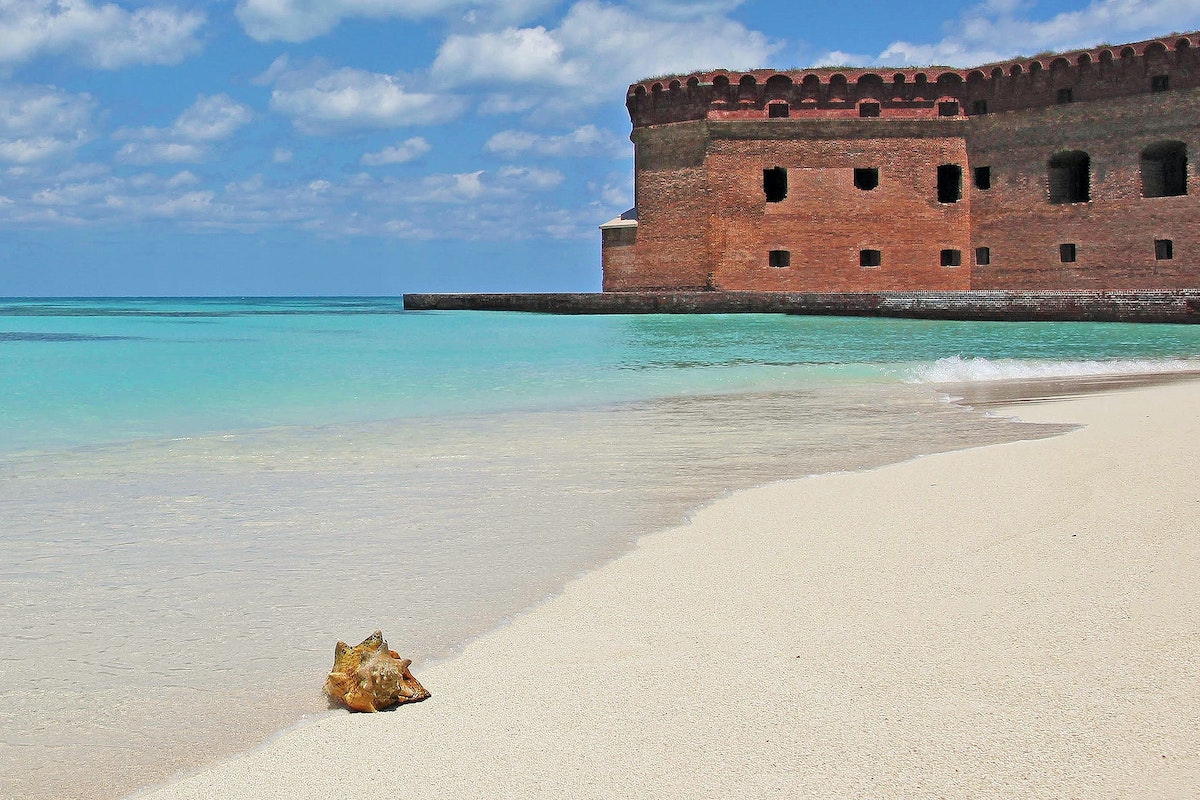By: Robin Van Auken
If you can swim—okay, if you can float—then you can snorkel! And the best snorkeling in North America is at Dry Tortugas National Park right near Key West. The shallow waters have spectacular views and are perfect for beginners and experts.
The Dry Tortugas is a cluster of seven islands composed of coral reefs and sand. The area is famous for its bird and marine life, and its legends of pirates and sunken gold.
A Brief History of the Dry Tortugas

Fort Jefferson at the Dry Tortugas – image via Pixabay
Often called the “Gateway to the Gulf,” the Dry Tortugas was an important landmark to passing ships, beginning with Juan Ponce de Leon, who first recorded it in 1513. The Spaniards found an abundance of sea turtles, or Tortugas, using the islands as nesting grounds, and provisioned their ships with fresh meat. But the islands had no freshwater, so the chain was renamed “Dry Tortugas” to warn mariners of the lack of water.
The reefs and shoals of the Dry Tortugas have been a serious hazard to navigation and the site of hundreds of shipwrecks. As a result, the United States government began maintaining a lighthouse on Garden Key in 1825.
The U.S. military utilized its strategic location in the Florida Straits and began constructing the massive Fort Jefferson there in 1846. Like many pre-Civil War forts, it was never completed because the invention of the rifled cannon made it obsolete—a great relief to soldiers stationed there because the relentless heat and disease outbreaks—such as yellow fever—made it an undesirable post.
Fort Jefferson lost its military value, but the area was still admired for its unspoiled coral reefs and its plentiful sea and birdlife. In 1935, President Franklin Roosevelt set aside the fort and the surrounding waters as a national monument. In 1992, the area was designated as Dry Tortugas National Park, protecting its historical and natural features.
Snorkeling The Dry Tortugas

Snorkeling – photo by Benjamin L. Jones on Unsplash
There are two modes of transportation to the Dry Tortugas: by sea and by air. There are large, fast ferries that make regularly scheduled trips to the park for about $100 per person. They also provide a refreshing picnic and snorkel gear; all you have to bring is a bathing suit, a towel, and sunglasses. You can also look into different options for Dry Tortugas Charter Trips, which could include activities such as fishing and snorkeling.
If you’re not too enthusiastic about a two-hour, one-way boat ride, consider taking a seaplane—which also comes with snorkel gear. Although the fee is about $200 per adult for a half-day, the trip is fast (40 minutes one way), exciting, and the view is spectacular.
Once on the main island of the Dry Tortugas, you can visit Fort Jefferson, which offers daily, 45-minute guided tours. Sportfishing is permitted with a license, and private boaters can tie up at the park, and picnic or camp out. Bird watching is renowned, and at certain times of the year, the skies are raucous with tropical birds. Turtles still lumber onto the beach each summer to bury eggs.
But it’s the snorkeling that is the primary attraction at the Dry Tortugas. Even a novice can enjoy the myriad of colorful tropical fish and living coral by exploring the island straight off a brilliant, white sand beach. The water remains shallow for several yards, though you’ll need to stand in the sand, never on coral or seagrass, which are protected and fragile areas. You’re invited to swim near the fort moat wall—historical artifacts also abound and, if you’re lucky, you’ll spot abandoned anchors and other pieces of machinery tossed overboard.
The park is staffed by nearly a dozen rangers and maintenance workers, who live in a casement section of the fort. Employees’ residences are off-limits to the public, but there are a small visitor center and shop.
At the end of the day, relax, camp out, and enjoy the beautiful weather!
More information about the Dry Tortugas can be found at www.nps.gov/drto.
How do you embrace the FIRE (Financial Independence and Early Retirement) lifestyle while addressing financial risks? One solution: semi-retire and travel the world. Let's look at how to get there in this comprehensive guide!
Read the Guide
About the Author
Robin Van Auken, MA, RPA, is the CEO of Hands-on Heritage. She is an anthropologist and registered professional archaeologist (National 15069). She specializes in working with communities, galvanizing individuals to contribute their memories, photographs, and artifacts to develop legacy projects. Through in-depth, sensitive interviews, she learns the important stories that connect people through time and space. Robin especially enjoys the challenge of hunting for historic photographs and artifacts that highlight America’s history. As a professional archaeologist, she has directed multi-year public cultural heritage projects, working with hundreds of volunteers and educating thousands of visitors.
Featured image via Unsplash.

